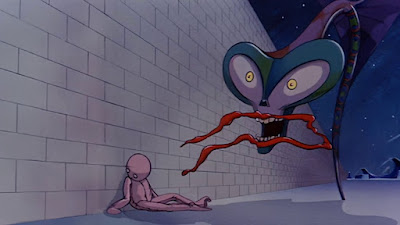So begins one of the quietest yet most intense transposed revenge westerns imaginable. Nicholas Cage brings his zen game to the role, receiving the worst of blows from bouncers and waiters alike and imparting precise wisdom gleaned from his former life at the top of the pile of the city's chefs. His presence alone is enough to get a seat at a table of a grimace-inducingly rarefied restaurant as part of his information trail blazing. In a bizarre underground fight scene where the down and out try to win money by standing up as off duty waiters beat the tar out of them he holds as best he can, returning no violence. Yet he is driven by his rage. This casting is poignant, allowing the champion of the giant performance to express his power with only the slightest action and a heavy silence. This is (and not for the first time) minimalist Nic Cage.
As an urban western it plays like an arthouse indy that you might choose because it was showing that night at the Valhalla. That's not a slight. This was once a routine decision based on a fridge calendar and the scarcity of marginal cinema (and marginal cinemas, for that matter) It bore a promise of reward for curiosity. You might see something anodyne, trifling or profound but the excursion so often returned riches that you did it again and again. Pig reminds me of that for its stripped narrative and refusal to play like a mainstream vehicle. Even the soft lighting of the night scenes recalls the higher end of the arthouse indies of the '80s. Adam Arkin's boss baddy is offered with an intensity of performance alone. Alex Wolff as Amir, the apprentice figure, a kind of Sancho Panza whose arc is dependably more dynamic than the hero's, fills the action and wonder that we need around the hero. It's a thankless role but given with real craft.
But do I believe the bad guys motivation for his crime? Not really. It's possible but unlikely. Is the waiters' fight club preposterous and pointless? Both, we get a little more character building from it but nothing that we wouldn't already expect. Weirdly, it is the pig herself, that serves as both McGuffin and catharsis and it's that odd extra step that I like and pushed that sense of going to the Valhalla on a cold and rainy night. If I'd come home on a tram from this (instead of clicking on it among the Netflix tiles) I'd have been feeling it settle and nourish. There's only a little nostalgia to this: we will probably never have an active arthouse cinema scene in Melbourne again, but we can still find films that remind us of why we miss it.
Still at some cinemas but I watched it on Netflix.









